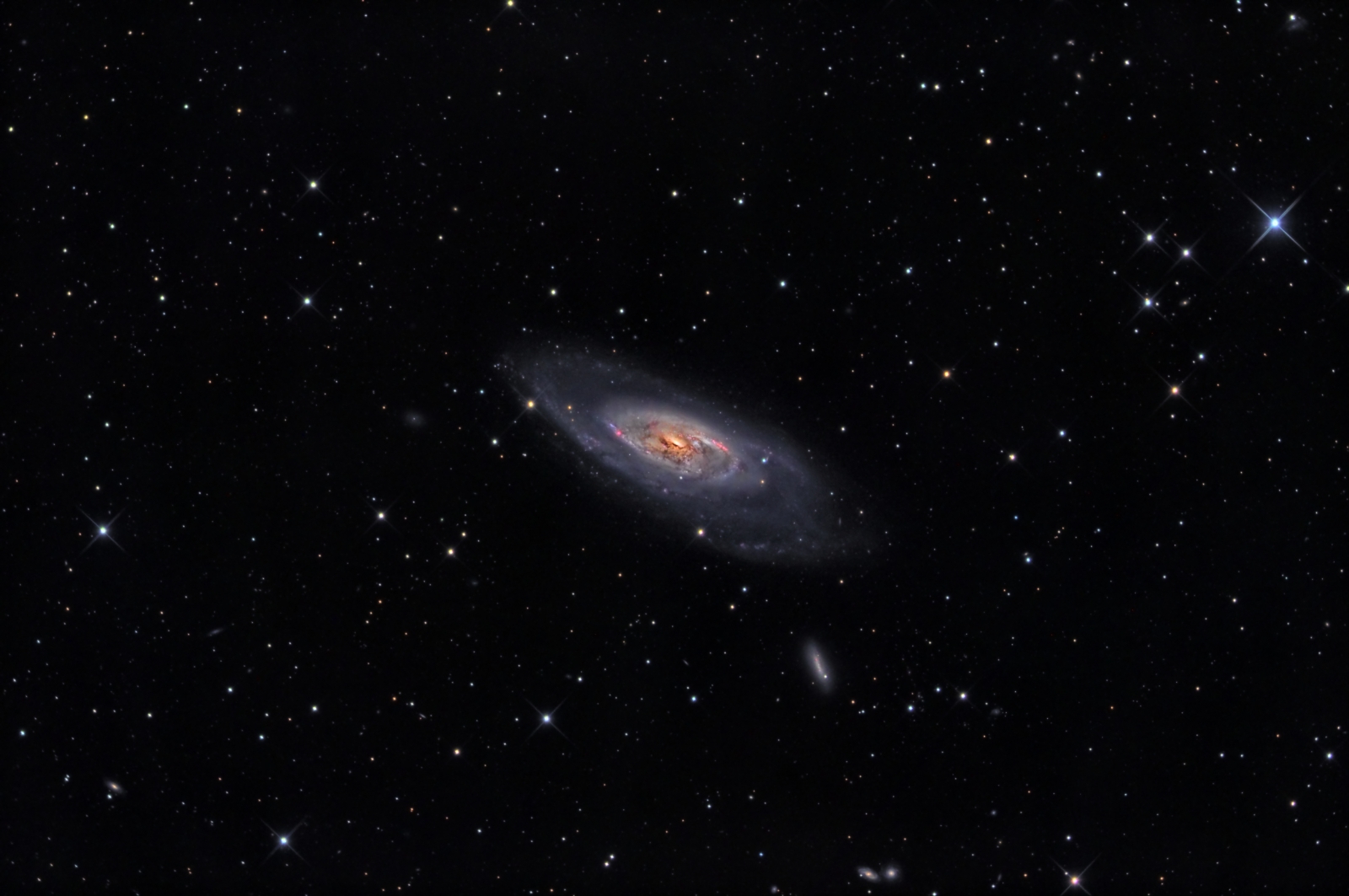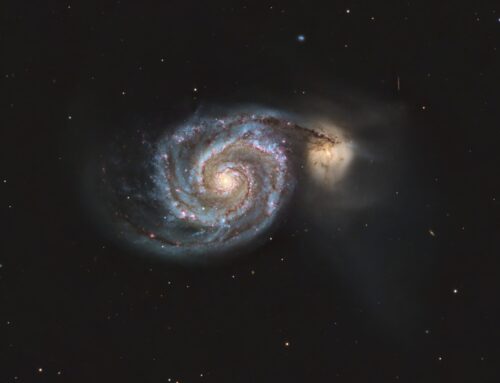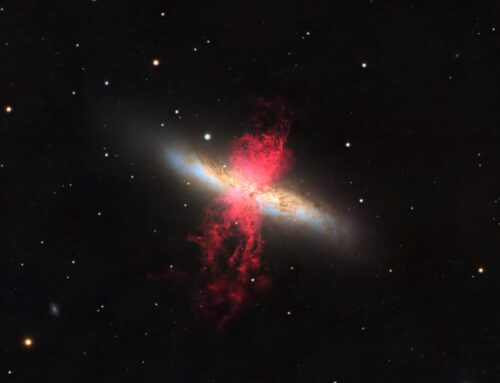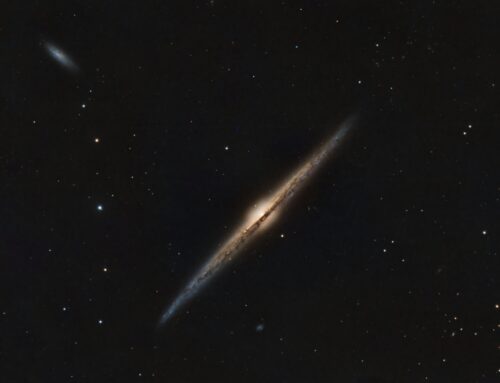M106 Galaxy
Click image for full size version
March 29, 2014
Back Cover, June 2014 Journal of the Royal Astronomical Society of Canada
Published in SkyNews Magazine, July/August 2014
M106, the 106th entry in Charles Messier’s catalogue, and is a pretty spiral galaxy around 24 million light years away. It is situated in the constellation Canes Vanatici (the Hunting Dogs), not far from the Big Dipper. The galaxy shows lots of pink nebulae and bluish spiral arms. M106 is classified as a Seyfert galaxy, meaning it has an active nucleus. It’s thought that part of the galaxy is falling into a supermassive black hole near the centre — it is sort of cannibalizing itself. The big galaxy below M106 is NGC4248. It also shows pink nebulae. There are many more galaxies in this image too: find the fuzzy patches that look different from the sharp, round stars. For example, if you look below NGC4248, near the bottom of the image, you’ll see a pair of galaxies close to each other. Some galaxies look like sharp streaks, while others are round or oval and can show spiral structure.
I have left the background of this image quite bright, as I think it reveals the “Integrated Flux Nebula”, which is a term coined for interstellar gas and dust that is illuminated by the integrated light of the Milky Way’s stars, rather than by an individual star. It is exceedingly faint, but is prevalent in this part of the sky. Note, however, I haven’t seen this mentioned anywhere else in connection with M106, so if anyone can shed some light on this question (pardon the pun), please let me know.
Tekkies:
SBIG STL-11000M camera, Baader LRGB and Ha filters, 10″ ASA astrograph, Paramount MX. Guided with STL-11000’s internal guider. Acquisition, guiding, calibration, and integration all done using Maxim-DL. Image registration and all processing in PixInsight. Shot from my SkyShed in Guelph, Ontario. Thin crescent moon during Ha and RGB acquisition – quite beautiful showing the old moon in earthshine. No moon during L acquisition. Good transparency and poor seeing throughout. Ha,R,G and B images were shot at f/3.6, while L data was acquired at f/6.8.
8x5m R, G, B, 84x10m L and 6x20m Ha, all unbinned frames (total=18 hr).
The R, G, B, L and Ha files produced in MaximDL were each background-corrected with DynamicBackgroundExtraction, registered and cropped to remove edge artifacts. R, G and B were combined into an RGB image and colour calibration applied. The Ha was added to the RGB using the NB-RGB script in PixInsight. The HaRGB image was stretched and colour saturation adjusted. The L and HaRGB images were processed with deconvolution, stretched and then HDRMultiscaleTransform was used at 6 pixel scales on the bright parts of the L image (with stars protected by masking). At this point, they were combined using LRGB combination, and TGV noise reduction was applied to remove fine scale noise. After another slight stretch moving only the black point, several operations were applied to only the luminance channel: LocalHistogramEqualization and unsharp mask to the core of the galaxy, and then a very slight convolution applied to the background. Contrast and saturation were adjusted using curves followed by ColourSaturation. Image scale is about 1.1 arc sec per pixel.







Truly beautiful shots. Outstanding processing. I’m a newbie having just purchased my first scope, a 6″ Comet Hunter. Hoping to get a camera soon and record what is see. Will meet you at AstroCATS.
Great website. Very inspirational!
Thanks for posting.
Great Website Ron 🙂 excellent shots ! thank you for sharing with us !